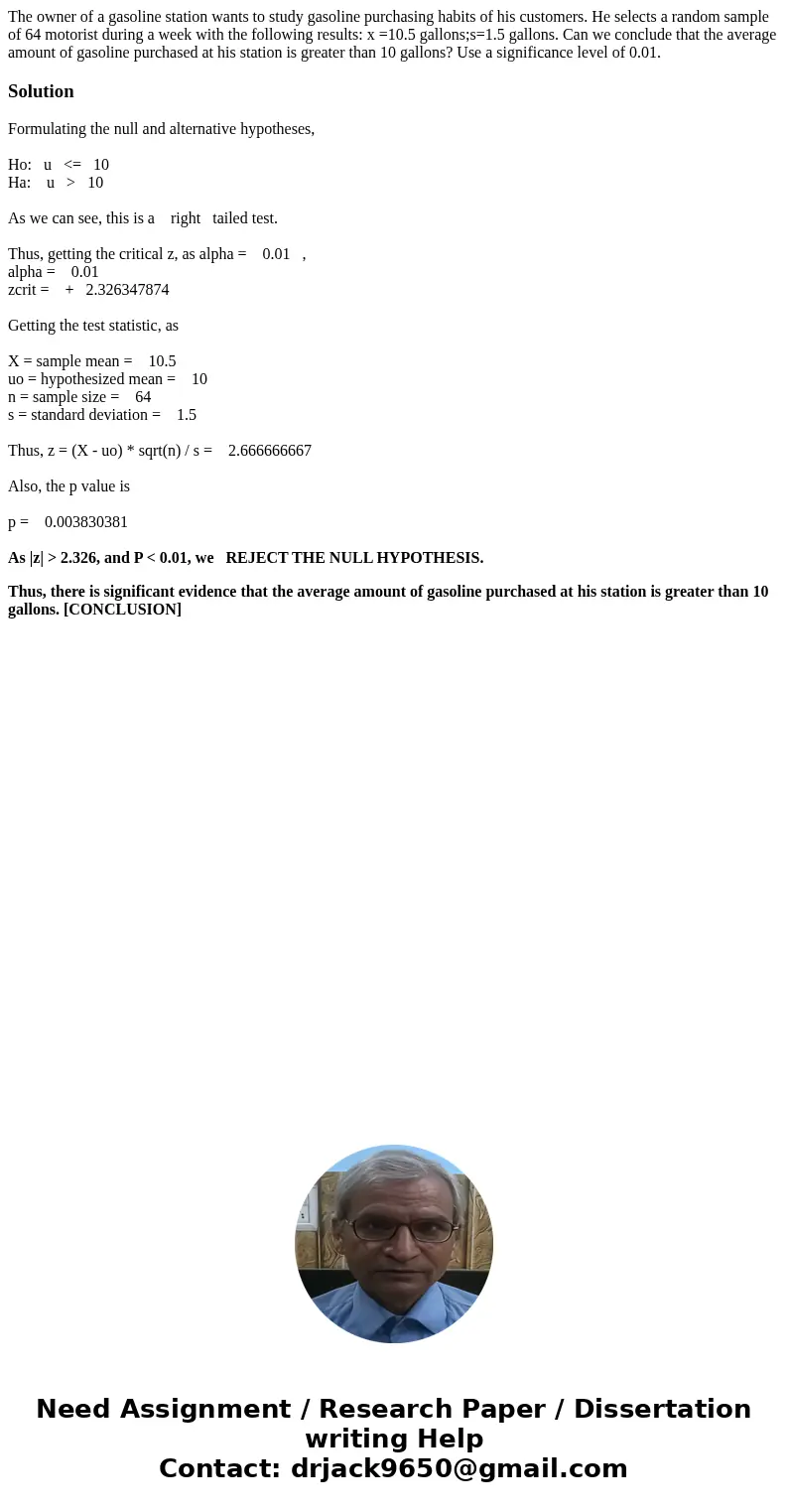The owner of a gasoline station wants to study gasoline purc
The owner of a gasoline station wants to study gasoline purchasing habits of his customers. He selects a random sample of 64 motorist during a week with the following results: x =10.5 gallons;s=1.5 gallons. Can we conclude that the average amount of gasoline purchased at his station is greater than 10 gallons? Use a significance level of 0.01.
Solution
Formulating the null and alternative hypotheses,
Ho: u <= 10
Ha: u > 10
As we can see, this is a right tailed test.
Thus, getting the critical z, as alpha = 0.01 ,
alpha = 0.01
zcrit = + 2.326347874
Getting the test statistic, as
X = sample mean = 10.5
uo = hypothesized mean = 10
n = sample size = 64
s = standard deviation = 1.5
Thus, z = (X - uo) * sqrt(n) / s = 2.666666667
Also, the p value is
p = 0.003830381
As |z| > 2.326, and P < 0.01, we REJECT THE NULL HYPOTHESIS.
Thus, there is significant evidence that the average amount of gasoline purchased at his station is greater than 10 gallons. [CONCLUSION]

 Homework Sourse
Homework Sourse